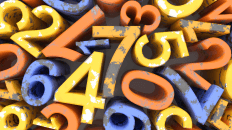A history lab is an inquiry based instructional approach which models the work of historians. Historical inquiry, whether done by historians or students in a history class, is propelled by a compelling historical question. History labs can be created by anyone by using a variety of free resources and primary materials you already include in your classroom discussions.
Here are the steps to creating your own history Lab:
Craft a focus question
An important first step to creating a history lab is crafting a focus question to drive the investigation. A focus question should be intriguing and open-ended, it must not have a single or simple answer, and it must be linked to significant historical evidence.
For example, “Were the events at Wounded Knee a necessary battle or an avoidable massacre” would serve as a well-crafted focus question. It does not have a single answer and to answer the question students have to inquiry into the historical record.
However, “What do you think would have happened if Lincoln had not been assassinated?” would not serve as a good focus question for a history lab. While it may provoke interesting discussion, linking answers to historical evidence would be difficult. Since Lincoln was assassinated, any answers would be conjecture about a course of events that did not happen, not historical inquiry.
Bruce Lesh, author of author of “Why Won’t You Just Tell Us the Answer?”: Teaching Historical Thinking in Grades 7-12, has put forth four general types of focus questions for history labs.
- Option Questions
- Source Specific Questions
- Contextual / Empathetic Questions
- Historiographical Questions
Option Questions
Option questions provide students with choice about how to consider a historical event or individual. Students are not required to use the options, and may offer their own option. For example, “Which term best describes Nat Turner, hero, villain, fanatic, religious, insane, etc?”
Source Specific Questions
Source specific questions are derived from a historical source that presents a challenge to students; consider particular challenge of sources i.e. propaganda, advertisements, political cartoons, autobiographies, memoirs, oral histories, old textbooks. For example, “Is the depicted event historically accurate?”
Contextual/Empathetic Questions
Contextual/ empathetic questions were posed during the time period in which the event occurred or when the person lived. This type of question facilitates consideration of the event from the perspective of the time period. For example, “Given the realities President Truman faced in 1951, why did he choose to fire General Mac Arthur?” Be cautious that the question does not engender historical judgement. Asking, “Was President Truman justified in firing General MacArthur?”, is such a question.
Historiographical Questions
Historiographical questions guide students to understanding that interpretations of the past are not static, but changed over time. For example, “How have interpretations of Reconstruction changed over time?” Why?
Deciding on a type of focus question can be very helpful in crafting a focus question. For a final check of the focus question consider the following:
- Is the question debatable and can more than one piece of evidence support the answer?
- Does the question connect the past and the present?
- Does the question enable students to construct their own understanding of the past?
- Does the question capture the interest and imagination of students?
- Does the question place an aspect of historical thinking at the forefront of instruction?
- Does the question represent a reasonable amount of content?
- Can the question be answered with accessible sources?
Curate Sources
Another key step in creating a history lab is curating the sources needed for the investigation. The documents/sources must provide students with the evidence needed to answer the focus question. Sometimes a well-crafted historical question is just too complex to be answered with a small set of documents. For this reason, some start building a history lab with a document set already curated to address a historical question.
Keep these key points in mind when curating sources for a history lab:
- optimally use 4-6 sources; no more than 8
- make sure the sources facilitate student investigation of the focus question
- make sure the sources are accessible to students; edit, provide vocabulary support, typed/transcript copies or other adaptations
- provide contextual information for each document about the author
- balance visual sources with text materials
- ensure the sources are comparable in length
Conduct the History Lab
Curating sources and crafting a compelling focus question are the two most challenging steps to creating a history lab. Once those steps are completed the design process shifts to planning for conducting the history lab and planning for the following stages.
- Initiate the investigation – start with an opener that captures students’ attention and creates a connection to the lab. Consider using art, music, simulations, conflicting accounts, etc.
- Build background knowledge – provide enough information about the setting to frame the historical context for the investigation. This can be done with a reading, video, podcast, etc. Be careful not to give away too much information.
- Conduct the investigation- provide students with document(s) to analyze individually along with a tool to facilitate analysis. Consider how a graphic organizer could facilitate the analysis, and how to possibly group students to share analysis.
- Report interpretations and class discussion – facilitate small group discussions about the sources and/or whole class reporting with activities such as four corners, debates, and jigsaws.
- Debrief student investigations – discuss findings as a whole group. Ask questions that:
Allow the teacher to determine if the students addressed all aspects of the document analysis.
Require students to support their arguments with evidence.
Have students address conflicting information.
Help students clarify thinking.
Draw connections or comparisons that the student did not already make. - Assess student comprehension of the content and historical thinking – consider a variety of assessments, especially those that are authentic, such as producing a press release or historical marker.
History labs take a significant amount of time to produce, so Lesh advises to have a goal of producing an introductory lab that exposes students to this type of inquiry. After that he recommends one lab per unit. If you cannot get to one lab per unit yet, at least make document analysis the focus of lessons on a regular basis.





Add comment